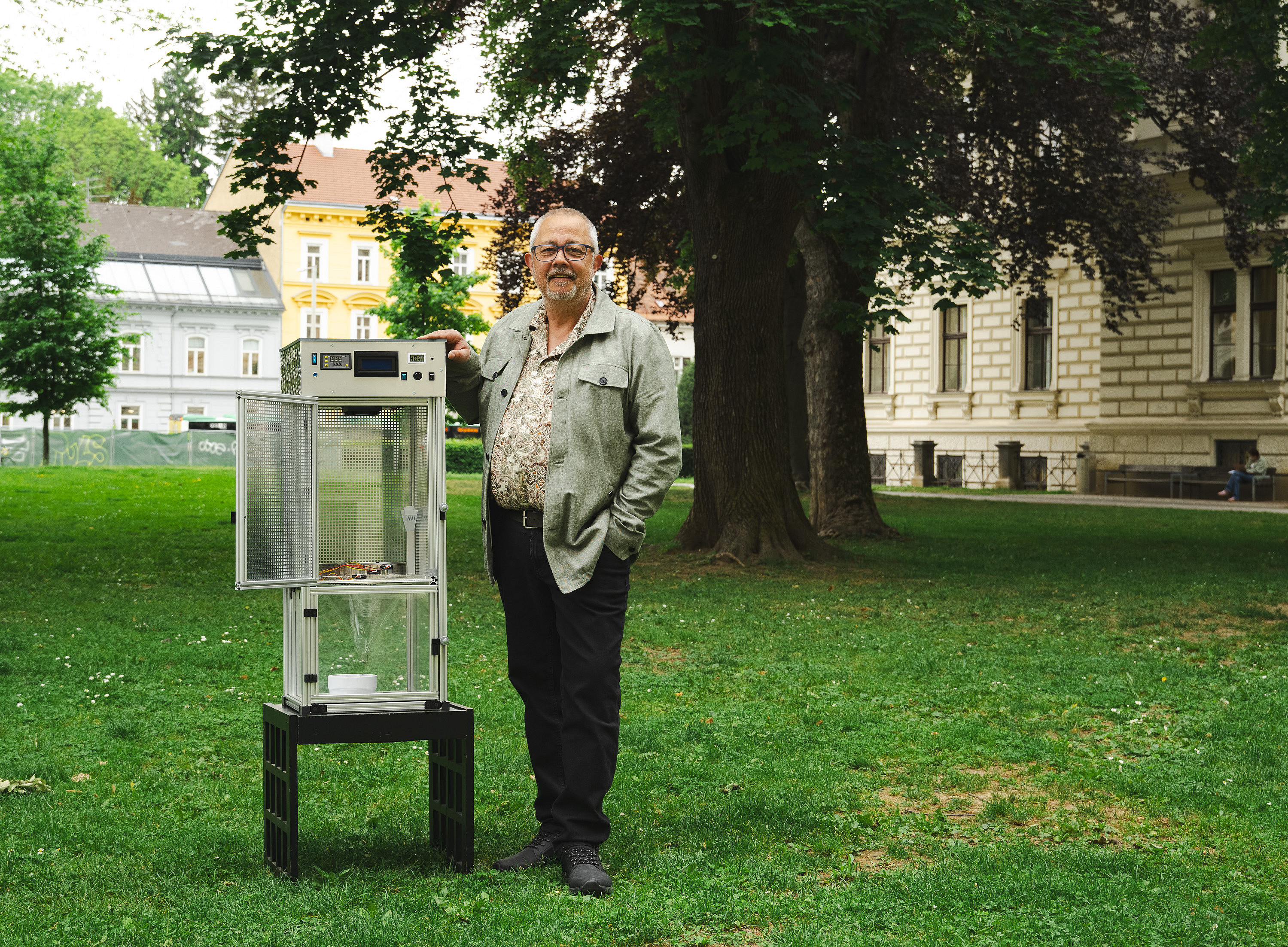When biologists research which microorganisms are present in soil samples, they still rely on a technology that is over 100 years old: the Berlese funnel. The soil is placed in a funnel, under which a preservation fluid is located. A classic light bulb heats the soil sample and dries it out. As a result, insects, worms and other microorganisms escape downwards and end up in the collection container.
At the University of Graz's Institute of Biology, there is also a room full of funnels and light bulbs. After decades of use, the institute's technician, Harald Pascher, decided to replace the old pipes and switches. "They were all from the 1940s," he says.
Tinkerer
But it wasn't just the old cables that were causing him headaches. Irradiating the samples with light bulbs is energy-intensive and leads to uneven drying. In his workshop, he began to tinker with new solutions for examining the organisms in the soil in a more controlled and energy-efficient way.
After a few prototypes, the innovative Berlesebox was born. "It's a closed system in which the samples are illuminated with LEDs and evenly heated and dried using standard heating elements and fans," explains the mechatronics engineer. Three sensors continuously monitor the moisture of the soil. The system looks like a small cabinet and has a battery so that the box can also be used without a power connection. "It is based on a 12-volt system and can therefore also be connected to a normal car battery in the field," explains Pascher.
The University of Graz has applied for a patent for the Berlesebox. Pascher manufactures the boxes for the researchers at the University of Graz himself in his workshop. An industrial partner is now being sought for series production.
